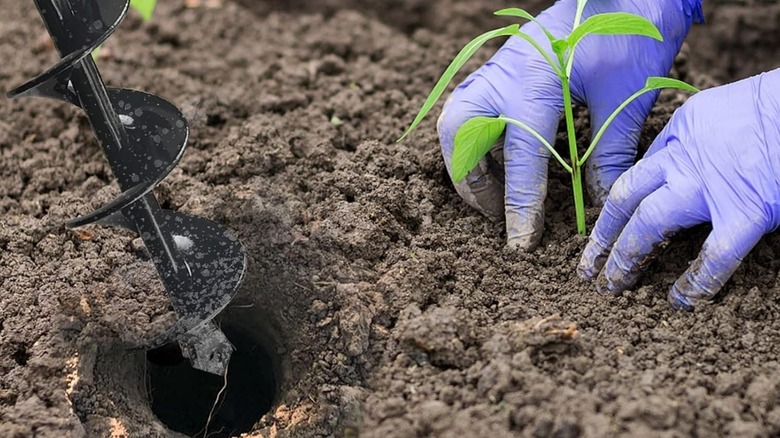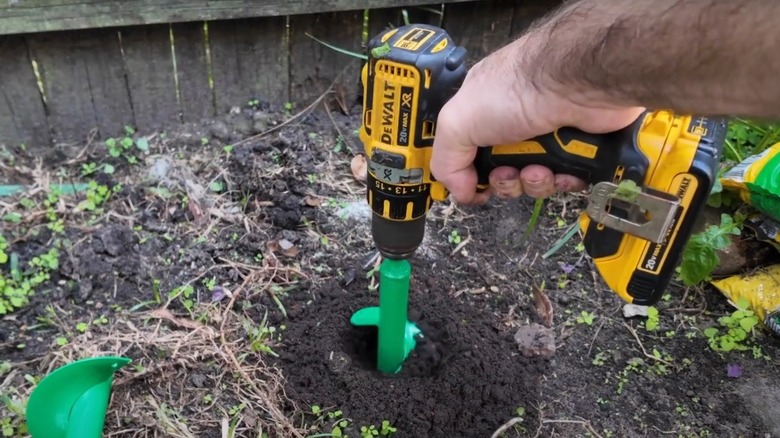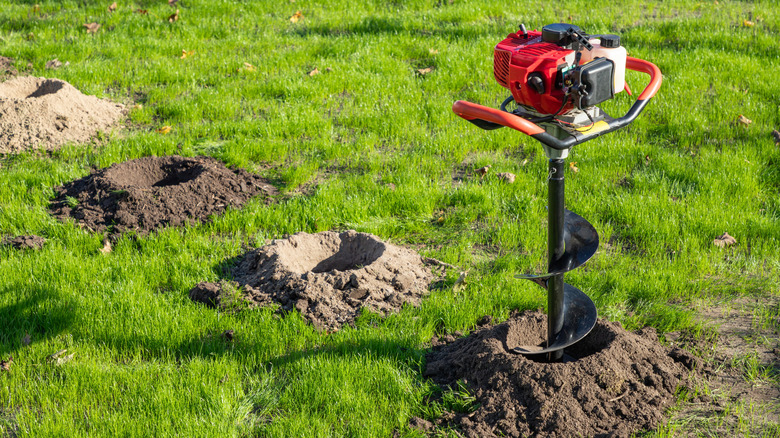What Is A Plant Auger And How It'll Make Your Next Garden Project Easier
We may receive a commission on purchases made from links.
When you have DIY repair jobs to do around the house, power tools are effective at speeding things up. Power tools can come in handy for gardening and landscaping projects, too, making the process go faster and requiring less use of muscle power. For example, although starting a no-till garden has its advantages, it can be easier to put in seeds after tilling the soil, and powered tillers are easier to use than hand tillers.
If you want to simplify gardening, a drill-powered plant auger is a handy tool worth considering. Plant augers resemble huge corkscrews; they drill through the soil easily, creating a round, precise hole that's ideal for inserting new plants. This functionality makes plant augers one of the most useful bulb planting tools.
Plant augers generally work like huge drill bits. In fact, you can insert one into the chuck on a power drill you already own. You could even use a plant auger with cheap cordless power drills as long as their battery voltage is at least 18V. That said, high-end drills with larger batteries will give you more power, which is helpful when working with packed soil that's difficult to dig. Learn more about how to use plant augers and the factors to consider when shopping for one to use with your power drill.
How a plant auger makes gardening easier
You can plant a wide assortment of vegetation using a soil auger, including ornamental annuals, perennials, and vegetables. If you have plants that need a particular depth, or those that require a hole with a certain diameter, augers can give you precise dimensions for the hole. Most augers offer a hole diameter range from about 2 to 18 inches. To set a precise depth for the hole, attach easily visible masking tape to the auger bit, then stop drilling when the marker reaches the soil surface. Apart from ensuring precise hole dimensions, an auger makes digging significantly faster and easier. Some gardeners find they can plant almost 10 times faster with this power tool compared to using a trowel.
Plant augers work well in a variety of soil conditions. They're even effective with clay, which can be tough to handle with a shovel because it's rock-hard when dry and sticky when wet. In fact, soil augers are so efficient at powering through tough soil that you may not want to use them in gardens where you have quite a few plants in the ground already. If you can't see exactly where their roots are, you could unintentionally damage them with the auger.
How to pick the right plant auger for your gardening projects
Take the time to find a plant auger diameter that fits your gardening needs. An auger measuring 2 to 4 inches in diameter is ideal for bulbs or seedlings. A bit creating holes of 4 to 7 inches in diameter works nicely for small trees, shrubs, and gallon-sized potted plants. Most 18V or 20V cordless power drills should have enough power to handle augers with these diameters.
If you need to make larger holes for potted trees, you might want to consider auger bits up to 12 inches in diameter. To ensure you have enough power to drive such a large auger, you might need a drill with a 36V to 60V battery. For extremely large holes for trees or fence posts, consider the handheld Ryobi auger lawn tool, which runs on a battery but doesn't work with a power drill.
Apart from finding the right auger, make sure you're using a drill with the correct chuck size. It's important to match the chuck size to the power you need. Light-duty drills have ¼-inch chucks, while medium-duty models have ⅜-inch chucks. If you need maximum torque to go through tough soil and make large holes for your plants, a power drill with a ½-inch chuck is the proper choice.


